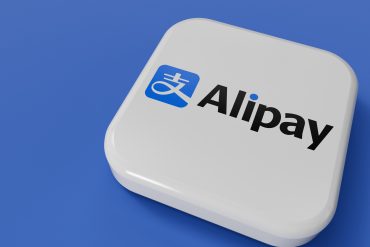

NFC mobile payments surge as Alipay’s tap-to-pay service transforms retail transactions across 400 Chinese cities
Key Takeaways
- Over 10 million merchants adopt Alipay Tap across 400+ cities within 11 months of launch, with 100 million users signing up since mid-2024 rollout
- RMB 10 billion investment commitment supports ecosystem expansion as Alipay fights to regain market share after dropping from 80% to 55% since 2014
- NFC technology revival in China transforms offline payments with single-tap interactions, bypassing QR code scanning across 300+ service scenarios
Introduction
Alipay has launched a major offensive to reclaim China’s mobile payment dominance with its NFC-powered “Alipay Tap” service, attracting over 10 million merchants within 11 months. The technology allows users to complete transactions with a single smartphone tap on merchant terminals, eliminating the multi-step QR code process that has defined Chinese mobile payments for over a decade.
The initiative represents Alipay’s most significant strategic response to mounting competitive pressure from WeChat Pay. Ant Group’s payment platform has committed RMB 10 billion to expand the Tap ecosystem as it battles to reverse a steady decline in market share from 80% in 2014 to 55% in 2023.
Key Developments
Alipay officially launched its NFC-based payment system in mid-2024, building on NFC Reader/Writer Mode technology that differs from traditional hardware-intensive solutions like Apple Pay. The service operates through simple tap interactions on merchant NFC tags or terminals, with users confirming transactions through the Alipay app without storing or transmitting card data.
The company has deployed an installation team of over 1,000 people to place 1 million devices within six months across major urban centers. More than 2,300 brands and vendors in cities including Shanghai, Chengdu, Wuhan, and Hangzhou were among the first adopters of the NFC payment service.
Alipay restructured its organization to support the initiative, creating two new business groups: the Alipay Business Group for content expansion and the Digital Payment Business Group for payment innovation. This “dual flywheel” strategy aims to strengthen both platform capabilities and core payment functions.
Market Impact
The service has achieved rapid market penetration with over 1,000 shopping malls across 50+ cities now supporting Tap functionality. FamilyMart reported a threefold increase in membership sign-ups at checkout after adopting the technology, demonstrating measurable business impact for early adopters.
Alipay’s market share stabilization efforts come as QR codes still dominate 93% of mobile payments nationwide according to 2023 data from the Payment & Clearing Association of China. The company faces particular challenges with iOS device compatibility due to Apple’s NFC restrictions, while Android users report smoother experiences with fewer required steps.
International traveler spending through Alipay Tap has risen significantly, supporting the platform’s global expansion strategy through its Alipay+ network. This growth occurs as more than 80% of smartphones in China now support NFC hardware, removing a previous adoption barrier.
Strategic Insights
The Tap initiative extends beyond payments to facilitate ordering, check-ins, parcel pickups, and government services across 300+ interaction scenarios. This positions Alipay as an interaction layer that integrates digital engagement within physical spaces rather than merely digitizing transactions.
The technology’s lightweight deployment model offers advantages over traditional NFC card emulation methods, requiring only NFC tags or tablets from merchants. This lower barrier to entry has accelerated adoption among small businesses, a key demographic in China’s fragmented retail landscape.
Alipay’s substantial financial incentives include RMB 6,000 monthly subsidies for participating merchants and promotional bonuses for service providers. The company plans to commit at least RMB 30 billion to the initiative’s initial rollout, signaling long-term strategic commitment.
Expert Opinions and Data
Liu Yuanju, a researcher at the Shanghai Institute of Finance and Law, notes that NFC technology offers superior security compared to QR codes through encrypted data transmission, reducing fraud risks associated with malicious QR code swaps. According to Finextra, this security advantage could drive broader adoption among security-conscious merchants.
Industry insiders reveal that NFC payments, once considered to have unrealized potential, have been revitalized through Alipay’s implementation. The technology has gained particular traction among chain stores and commercial districts in major cities, though challenges remain in promoting adoption among smaller businesses.
User interviews indicate that Android users find the Tap process more convenient than QR code payments due to fewer required steps, while iOS users report less convenience due to additional app permissions and authorization requirements. Some merchants like Shanghai grocery store owner Shan Luhui note that cash withdrawals from the system are less immediate than QR code payments, creating cash flow considerations.
Conclusion
Alipay’s NFC initiative represents a significant technological shift in China’s mobile payment landscape, with over 10 million merchants adopting the service within its first year. The platform’s substantial investment commitment and rapid deployment demonstrate its strategic importance in the company’s efforts to regain market leadership.
While QR codes continue to dominate Chinese mobile payments, the Tap service has achieved meaningful early adoption and positions Alipay to capture emerging opportunities in integrated digital commerce. The technology’s success will likely depend on resolving iOS compatibility issues and demonstrating clear operational advantages over established QR code workflows.





